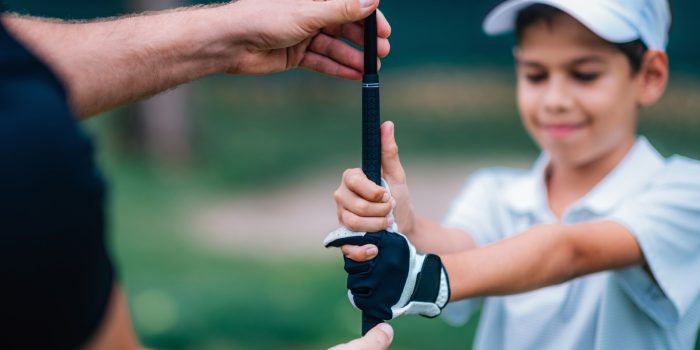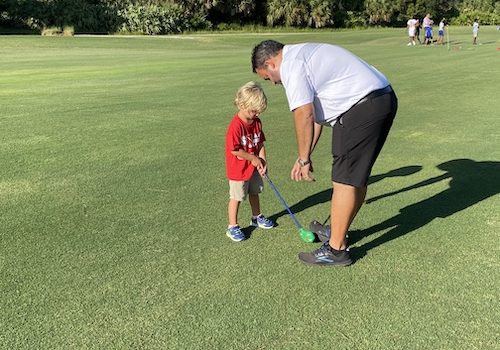
The Importance of a Good Golf Grip
Golfing is an exact sport, requiring plenty of dedication and focus. Players train for years to perfect their swing, yardage, and stance.
Golf trains a player to perfect their swing, giving them increased control over the arc and angle. To perfect these circumstances, a golfer must be aware of several factors that could enhance or impede their swing.
A significant factor that could improve a golfer’s swing is grip. Grip plays a crucial role in both trajectory and swing strength. A proper grip can be the difference between a weak hit and a strong one.
What is Grip?
The grip is essential because it is a huge determiner of the ball’s trajectory. The correct grip can ensure that a ball travels the way a player intends. Perfecting grip can ensure that each swing takes the ball closer to the hole, not further away.
Many golf instructors emphasize the importance of grip when instructing students. Perfecting grip and stance are often the first topics covered when teaching a player how to golf.
Some teachers prioritize the grip so much that their students can’t continue to golf until perfecting it.
How to Perfect Grip
Here at Indian River Golf Foundation, we understand the importance of a proper golf swing. We’ve helped many students achieve their golf dreams, and a key component to their developing success is perfecting their grip.
Maybe an instructor has provided feedback on your swing, and you’re unsure of where to go. You could be interested in reading up on golf and wondering where to begin.
Wherever you are on your golf journey, we’ve prepared five tips that will help improve grip in no time. With these tips at your disposal, you’ll have a professional-tier grip in no time!
1. Observe natural grip
The best way to start correcting your grip is to observe it in action. Next time you’re on the course, take note of grip each time you hit the ball. Consider where your fingers wrap around the club.
Some factors that could influence your swing:
- Fingers are overlapped or interlocked
- Overall grip strength
- Weak or dominant hand usage
- Placement of hands on the club
Take special note of the above factors during this step. Being aware of the factors that influence a swing could tremendously help a golfer perfect their swing.
2. See which grip yields the best results
There are several types of grip that golf professionals commonly use. Golf teachers and mentors typically recommend these styles of grip.
Types of golf grip:
- Interlocking: Interlocking pinkie and index fingers
- Overlapping: Overlapping the pinkie finger on top of the index finger
These grip types are somewhat of an industry standard. However, everyone has their particular style of grip. Many golfers deviate from these types of grip.
Take Jordan Spieth, for example. He has an alternative method of gripping the club, which has yielded plenty of success for him. His approach involves interlocking his left index finger with his pinkie, which is highly unusual and successful.
Spieth is proof that golfers can choose whichever grip works best for them. If you find yourself preferring an alternative method of grip, try it out. If the grip yields good results for you, it may be best to deviate from the industry standards.
3. Mark your gloves to guide your grip
When you’re first starting on the green, it might be a bit difficult to remember how to position and place your hands when gripping the club. This issue is prevalent amongst both beginning and professional golfers.
Thankfully, golf course regulations allow golfers to mark their gloves, which can significantly assist in grip technique and overall form. Drawing the outline of your fingers and the areas they overlap and interlock is usually recommended.
A permanent marker is best for marking gloves, as it won’t fade over time. Much like marking a ball to perfect swing, drawing on gloves to perfect grip is a great way to improve a golfer’s form. By drawing on their gloves, a golfer is ensuring that their grip is consistent and effective.
4. Learn which pressure works best
There are various types of pressure a player can apply to their grip. Much like the types of grip, these grip pressures vary between golfers. Some prefer a firmer grip, whereas others prefer a looser one.
The pressures of grip include:
- Firm: For players that have difficulty slicing a ball
- Neutral: For players that consistently shoot where they aim
- Weak: For players that tend to hook the ball when swinging
Each pressure type depends on a golfer’s particular swing style. If unsure of which method to choose, we suggest hitting a few balls on the course. This practice will allow a golfer to see where their swings tend to go, allowing them to correct these mistakes in real-time.
5. Practice!
It may be one thing to read something and another to practice it. The best way to perfect grip is to take these tips to the course and practice them.
Whether practicing alone or with an instructor, carefully note current trends in grip or swing direction. Using the above tips, you can correct anything you don’t like about your current grip.
By applying the skills you’ve learned, you will be well on your way to hitting consistent shots.
Learn More With Indian River Golf Foundation
If you’re excited to get on the course and perfect your grip, contact the Indian River Golf Foundation. We would love to help you tee up!
If you have any questions about our organization or any of our programs, feel free to reach out at (772) 713-9593 or reach out via email. For more information about who we are or what we do visit our Facebook page today!




This Post Has 0 Comments